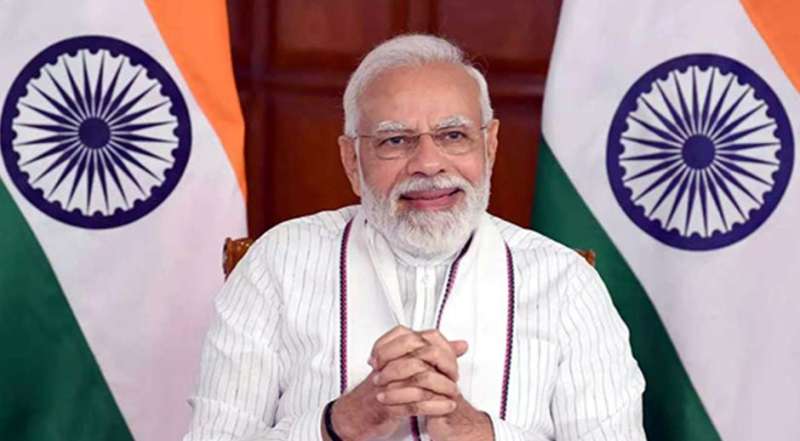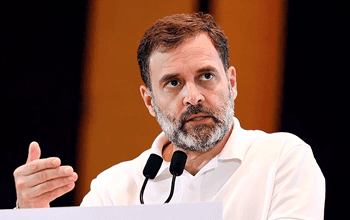DMart | From ₹3341 Cr to ₹57790 Cr |17x Growth = 12 Years | 20 Points

The Value Tsunami — DMart’s Relentless March From A Single Shop To India’s Grocery Powerhouse
-
Founding & launch (origin story):
1.1. DMart was founded by Radhakishan Damani and opened its first store in 2002 in Mumbai.
1.2. The business started as a tightly run, value-focused supermarket rather than a capital-intensive hypermarket experiment. -
Seed capital & early funding posture:
2.1. DMart’s precise seed-capital figure was never publicly disclosed; the chain was primarily bootstrapped from Damani’s personal resources and conservative balance-sheet management.
2.2. The company’s first major public capital event was the ₹1,870 crore IPO in March 2017, which marked DMart’s full public-scale funding moment. -
Core strategy that created the moat:
3.1. Everyday Low Prices (EDLP) — consistent low prices rather than heavy promotional cycles.
3.2. Real-estate discipline — preference for owned properties or very selective leases to cut occupancy costs.
3.3. Cluster expansion — grow in tight geographic clusters to minimise logistics and distribution costs.
3.4. Lean store economics — minimal décor, tight assortments, high inventory turns. -
Operational discipline (store-level practices):
4.1. Small SKUs but high turns on staples/FMCG.
4.2. Heavy emphasis on cost control across shrinkage, staffing, and logistics.
4.3. Measured roll-out of new stores to protect per-store economics. -
Scale today — updated figures till August 31, 2025:
5.1. FY2025 revenue (year ended Mar 31, 2025): ₹57,790 crore.
5.2. Total DMart stores as of Mar 31, 2025: 415 stores.
5.3. Retail space: ~17.9 million sq. ft. across India.
5.4. These are the baseline figures for August 2025 comparisons. -
Growth trajectory over time:
6.1. Revenue growth (FY2013 → FY2025): from ₹3,341 crore in FY2013 to ₹57,790 crore in FY2025 = ~17× growth.
6.2. Store expansion (FY2014 → FY2025): from 75 stores in FY2014 to 415 in FY2025 = ~5.5× growth.
6.3. Retail space (FY2014 → FY2025): from ~2.1 mn sq. ft. to ~17.9 mn sq. ft. = ~8.4× growth. -
Market position & indicative market share:
7.1. The organized food & grocery market in India is valued at ~₹2.4 trillion (FY2023), growing steadily since.
7.2. With ₹57,790 crore revenue in FY2025, DMart holds an indicative ~18–19% share of the organized F&G segment.
7.3. This is an analytical estimate, not an official company-reported figure. -
How DMart captured Indian shoppers:
8.1. Focus on the “monthly basket” — staples and FMCG where price sensitivity is highest.
8.2. Reliability & word of mouth — repeat customers drive high footfalls.
8.3. Cluster strategy ensures strong logistics, vendor relationships, and dominance in chosen catchments.
8.4. Customer trust in low prices — no gimmicks, no short-lived promotions. -
Online strategy — DMart Ready:
9.1. Launched in 2016, DMart Ready is the e-commerce arm.
9.2. It follows a profitable pick-up & local delivery model rather than cash-burning national expansion.
9.3. Consistent with DMart’s conservative DNA, it grows cautiously. -
Unit economics that sustain advantage:
10.1. Inventory turns — fast-moving staples reduce working-capital lockup.
10.2. Gross margin mix — higher margins in non-food balance out razor-thin food margins.
10.3. Real estate ownership reduces rental volatility.
10.4. Logistics control ensures low distribution costs. -
Capital allocation & balance-sheet discipline:
11.1. DMart prefers internal accruals + conservative debt for store growth.
11.2. IPO proceeds (2017) were partly used to repay ~₹1,080 crore of debt, underlining low-leverage focus.
11.3. Expansion is carefully paced to maintain profitability. -
Competitive landscape (2025):
12.1. Reliance Retail (Reliance Smart, Jiomart): multi-format, omni-channel giant.
12.2. JioMart: Reliance’s digital-first grocery & marketplace play.
12.3. Trent (Star Bazaar): Tata’s grocery chain under Trent.
12.4. More Retail: PE + Amazon-backed, ~775 stores.
12.5. Spencer’s Retail: smaller, premium-focused, ~120–125 stores. -
Competitor comparison table (as of Aug 31, 2025):
| # | Company | Parent / Owner | FY2024–25 Revenue | Stores (latest) | Notes |
|---|---|---|---|---|---|
| 1 | DMart (Avenue Supermarts) | Public (R. Damani promoter) | ₹57,790 cr (FY25) | 415 (Mar 2025) | EDLP, owned real estate, cluster growth |
| 2 | Reliance Retail (Smart, Jiomart, others) | Reliance Industries | ₹3,30,870 cr (FY25, consolidated) | ~19,340 (all formats) | Largest player; omni-channel |
| 3 | JioMart | Reliance | Est. US$1–1.6 bn GMV (2024) | N/A (platform) | Online grocery & marketplace |
| 4 | Trent (Star Bazaar) | Tata Group | ~₹17,135 cr (FY25 consolidated) | Limited (Star Bazaar part of Trent portfolio) | Multi-format retail (Zudio, Westside, Star) |
| 5 | More Retail | Samara Capital & Amazon | Est. ~₹5,000–6,000 cr run-rate (FY25 guidance) | ~775 (2025) | Hybrid model; IPO plans |
| 6 | Spencer’s Retail (incl. Nature’s Basket) | RP-Sanjiv Goenka Group | Sub-₹1,000 cr scale | ~120–125 | Premium grocery, hypermarkets |
-
Strategic contrasts (DMart vs rivals):
14.1. Reliance: wins on scale & omnichannel; DMart on unit economics.
14.2. JioMart: digital-first, while DMart is store-first.
14.3. Trent & More: expansion-driven, testing formats; DMart = cautious & profitable.
14.4. Spencer’s: premium niche vs. DMart’s mass value focus. -
Risks that could challenge DMart:
15.1. Rising input costs (food inflation).
15.2. Urban wage/rental inflation.
15.3. Quick-commerce rivals (Blinkit, Zepto, Instamart) capturing “top-up” spends.
15.4. Changing consumer behaviour toward convenience over price. -
Opportunities ahead:
16.1. Semi-urban expansion where organized retail penetration is still low.
16.2. Private labels in FMCG and home goods.
16.3. Micro-fulfilment for last-mile delivery.
16.4. Tier-2/3 cluster strategies to lock-in new demand pockets. -
Consumer trends that help DMart:
17.1. Rising budget consciousness in inflationary times.
17.2. Strong preference for predictable pricing.
17.3. Monthly-basket culture still dominates India vs. daily online top-ups.
17.4. Shoppers reward trust + consistency. -
Investor view & stock market journey:
18.1. 2017 IPO was one of India’s most successful, oversubscribed 104×.
18.2. Since listing, Avenue Supermarts has maintained steady, profitable growth.
18.3. Institutional investors continue to value DMart for unit economics + conservative leverage. -
About the founder — Radhakishan Damani:
19.1. Renowned as a legendary value investor before DMart.
19.2. Known for low-profile lifestyle and long-term investing philosophy.
19.3. His DNA — cost-focus, cash discipline, patience — is reflected in DMart’s strategy. -
Actionable takeaway (one-liner):
DMart proves that relentless discipline beats blitzscaling — it has built India’s most profitable grocery retail engine by staying boring, patient, and obsessively efficient.
SEO Keywords (naturally included above):
DMart, Avenue Supermarts, DMart growth, DMart FY2025 revenue, DMart store count 2025, DMart market share India, Radhakishan Damani biography, organized grocery India, Reliance Smart vs DMart, More Retail stores 2025, Spencer’s Retail 2025.
Disclaimer
The information presented in this article has been compiled solely for general informational and educational purposes. While reasonable efforts have been made to ensure accuracy, The Profit India makes no representations or warranties, express or implied, regarding the completeness, reliability, timeliness, or accuracy of the content.
Readers are strongly advised to independently verify all facts, figures, financial data, and statements before relying on them for any purpose, including but not limited to investment, business, or commercial decisions. The content does not constitute financial, legal, or professional advice and should not be treated as such.
The Profit India, its authors, affiliates, and representatives expressly disclaim any liability for errors, omissions, or inaccuracies in the information provided, as well as for any loss, damage, or consequences, direct or indirect, arising from the use or reliance upon this article.
No Endorsement: Any mention of companies, brands, products, or services such as DMart, Reliance, JioMart, Star Bazaar, More Retail, Spencer’s, or others is purely for factual and comparative reference. Such references do not imply endorsement, recommendation, or criticism by The Profit India.
By accessing or using this content, readers acknowledge and agree that The Profit India shall not be held responsible or liable, under any circumstances, for actions taken based on the information herein.





